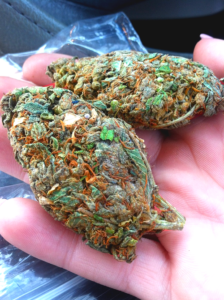Weed in Samsun — a detailed, practical guide.
Quick overview (TL;DR) Weed in Samsun
- Recreational cannabis remains illegal across Türkiye, including Samsun; possession, sale, and trafficking carry criminal penalties. (Wikipedia)
- Türkiye has moved in recent years to legalize medical cannabis products with very low THC (and regulated cultivation for pharmaceutical use); rules changed significantly in 2024–2025.
1. Context: Samsun and why local info matters Weed in Samsun
Samsun is a major Black Sea port city in northern Türkiye with a population of over a million in the metro area and a mix of students, workers, and families. Like most Turkish provinces, Samsun has a visible law-enforcement presence and local policing that mirrors national drug policy. Local news reports regularly cover seizures and arrests tied to cannabis and other narcotics, which is why local guidance matters for both residents and visitors.
2. Legal status in Türkiye (short answer + what changed recently) Weed in Samsun
- Recreational use: Illegal nationwide. Possession and use for recreational purposes can lead to fines, detention, or longer criminal penalties depending on the amount and whether supply/trafficking charges are involved. (Wikipedia)
- Medical use: Over the past few years Turkish authorities have introduced regulated pathways for medical and pharmaceutical cannabis products — primarily low-THC formulations and products that meet strict regulatory standards. In 2024–2025 the government adopted regulations clarifying cultivation for pharmaceutical ingredients and allowed licensed pharmacies to dispense low-THC cannabis products for medical use under prescription. These are tightly controlled and not equivalent to broad “medical marijuana” systems seen in some other countries.
3. Enforcement in Samsun — the on-the-ground reality Weed in Samsun
Local media and police releases show periodic operations in Samsun Province (districts such as Terme and others) where cannabis plants, harvested material, or processed product have been seized and suspects detained. These operations indicate active policing and priority on disrupting local cultivation and trafficking. A few representative reports from regional outlets cite seizures of multiple kilos and arrests tied to outdoor plantings or storage sites.
4. Health and harm-reduction basics
Even where cannabis is legal or decriminalized elsewhere, there are health considerations that still apply in Samsun:
- Impaired judgment and driving: Cannabis impairs coordination and reaction time. Driving under the influence is a safety and legal risk.
- Unknown potency and contamination: Street-sold products may be adulterated with other drugs, pesticides, or molds. Without regulation, potency varies widely.
- Mental health risks: Higher potency and frequent use can increase the risk of anxiety, psychosis in vulnerable people, or worsening of mood conditions.
- Interactions with medications: Cannabis compounds (THC, CBD) can interact with prescription medicines. Consult a doctor before use, especially for cardiac, psychiatric, or seizure conditions.
If someone experiences an adverse reaction (severe anxiety, chest pain, breathing problems, loss of consciousness), seek emergency medical help immediately. These health principles are universal; local medical professionals in Samsun can assist but will also adhere to legal reporting rules if illegal substances are involved.
5. Medical cannabis in Türkiye — how (and whether) it applies to you
If you believe you may benefit from a cannabis-derived medicine, here’s the safe legal pathway:
- See a licensed physician — a Turkish specialist who can assess your condition and, if appropriate, prescribe an approved low-THC/dosage cannabis-derived product permitted under Turkish regulations.
6. Where people actually get cannabis in Samsun (and the risks)
Because recreational cannabis is illegal, the “market” is clandestine. Local buyers may encounter:
- Street dealers or acquaintances — unpredictable quality, legal risk, potential scams.
- Homegrown product — some small-scale outdoor plantings have been found in orchards or fields, sometimes by family members; these operations are subject to police raids and criminal charges.
7. Practical advice for residents and visitors
- Don’t carry or use recreational cannabis. The legal risk is non-trivial. (Wikipedia)
- If you use cannabis for medical reasons abroad, don’t assume it’s legal here. Bring medical records and consult a Turkish doctor in advance; importing personal medical cannabis is usually illegal.
8. Economic & policy angle: why Türkiye is changing course slowly
There are several drivers behind Türkiye’s partial opening to regulated cannabis for medical and industrial use:
- Pharmaceutical demand: governments see potential to source active pharmaceutical ingredients domestically under tight controls. Regulations in 2024–2025 clarified cultivation and production rules to meet pharmaceutical standards.
These shifts are policy-oriented and bureaucratic — they create narrow legal channels for research, pharma production, and certain medical uses but do not legalize recreational markets.
9. Cultural and social perspectives in Samsun
Public attitudes in much of Türkiye toward recreational cannabis are generally conservative relative to parts of Europe or North America. Local communities, family norms, and public opinion influence enforcement and social stigma: being linked to illegal drug activity can have social consequences beyond legal penalties. For foreigners, it’s helpful to respect local norms and remember that what might be tolerated elsewhere can be legally and socially risky in Samsun.
10. Recent notable developments and local incidents
- In 2024–2025 national regulations were updated to allow licensed cultivation for active pharmaceutical ingredients and to permit low-THC cannabis products to be sold through pharmacies under prescription. This was the most significant regulatory change in recent years.
11. If you’re facing legal trouble in Samsun related to cannabis
- Get a lawyer who understands Turkish criminal and narcotics law.
- Document everything—names, dates, what happened; don’t give long statements without counsel.
- Consular help for foreigners: if you’re a non-Turkish national, your embassy or consulate can provide a list of lawyers and guide on local processes (they cannot get you out of charges).
- Medical emergencies: seek immediate care and then inform legal counsel.
12. FAQs (frequently asked questions)
Q1: Is cannabis legal in Samsun?
A: No. Recreational cannabis is illegal throughout Türkiye, including Samsun. Possession, sale, and cultivation without appropriate licenses are criminal offences. Recent regulatory changes allow narrow, controlled medical/industrial uses under strict oversight, but these do not legalize recreational use. (Wikipedia)
Q2: Can I buy CBD or low-THC products in Samsun?
A: Some low-THC, regulated cannabis-derived medical products have been authorized to be dispensed via pharmacies under prescription following 2024–2025 regulatory updates. Availability is limited and depends on regulatory approvals and pharmacy stock. Over-the-counter CBD supplements common in some countries may not be legal or may be restricted — always check with a licensed Turkish pharmacist or doctor.
Q5: Are there safe alternatives for pain or other conditions if I can’t access cannabis?
A: Yes — many evidence-based medications and therapies exist for chronic pain, anxiety, and other conditions. Discuss alternatives with a Turkish healthcare provider who can suggest approved treatments available in Türkiye.
14. Final takeaways — what to do next
- If you’re in Samsun: don’t buy or use recreational cannabis. The legal and health risks outweigh any potential perceived benefits.

I have used Global Weedworld (Globalweedworld@galaxyhit.com) at least 4-10 times and every time it has been a top notch.
He is the best local plug you can find around. He is very pleasant, friendly and fast. He is a lifesaver.
He sells top shelf WEED and other stuffs at moderate prices. I will always recommend this guy when people ask me my ” go-to”.
All you have to do is follow his instructions.
Just send him an email and I bet you will come back for more once you finish with what you bought because his quality is amazing.
Also Contact him on his telegram link telegramhttps://t.me/GlobalweedWorld
⚠️ Know that he do not have telegram channels only the telegram link above

The strain was exactly what I was looking for. It had that perfect balance, and the high was smooth. Also, the packaging was discreet and professional. Really impressed
I’ve been buying online for a while, but this shop’s service and product quality set them apart.
Everything was fresh, potent, and the customer service is outstanding
My first purchase and I’m hooked.
Excellent product and the customer support was super helpful in answering all my questions. Highly recommend this site
From browsing to checkout, everything was seamless. Delivery was on time, and the product exceeded my expectations.
I’ll be recommending this to my friends
I’ve been buying from a lot of different places, but this one stands out. The bud is top-notch, and the prices are reasonable.
Will be ordering again soon! Amazing experience! The product was exactly as described,
and the packaging was on point—safe and odor-free. Thank you!
Delivery was crazy fast, and the product… This place is setting the bar for online weed shops. Keep doing what you’re doing. You’ve got a loyal customer for life.
Third order in a row — flawless. Told my friends — now they’re ordering too. This is how weed buying should be. Clean, easy, reliable.
Best decision I made all week. Real ones know. This site is fire. I don’t usually leave reviews, but this deserved one.
I was worried about ordering online, but the packaging was perfect completely. You can tell they care about their customers. Fast replies and reliable support.